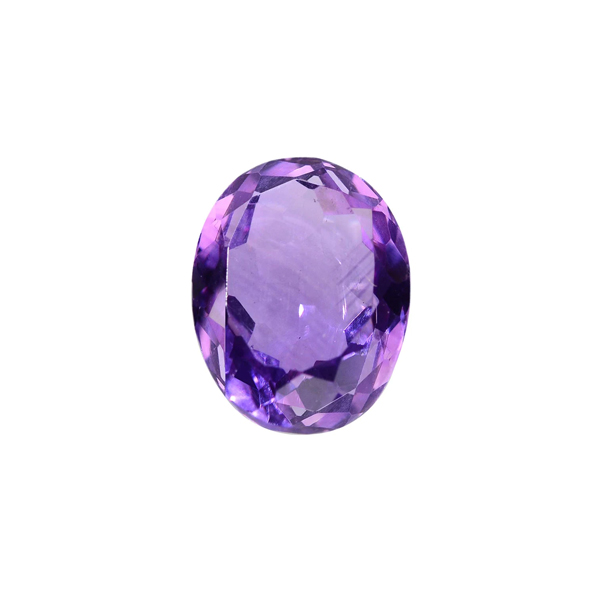Amethyst is a fine violet-colored stone. Its etymology comes from the Greek word "amethysts" which means drunkenness, its prefix "a" means deprivation, so its name means sobriety.
The name comes from Greek mythology: Amethystos, a Catalan nymph, was coveted by the god of wine and partying, Dionysus, who in his rage spilled his glass of wine on the glass and turned purple.
From this story, amethyst was often used to create glass to prevent drunkenness.
In the Renaissance, Leonardo de Vinci already used this stone for its lithotherapeutic virtues, in particular to dispel negative thoughts and enhance creativity.
Its violet color was quickly appreciated and the Etruscans and Egyptians used it as a decorative stone. In the 17th century, amethyst became a fashionable stone for clasps, brooches and beads.
Even today, due to its deep color and brilliance, amethyst remains popular for jewelers
- Color: Amethyst is a violet macrocrystalline variety of quartz. The color can be more or less intense, depending on the amount of iron (Fe+3) it contains.
Amethyst displays a range of violet tones, from light lilac to dark violet. The color is due to traces of iron and aluminium contained in the crystalline structure. The most prized amethysts have a deep, intense violet color with good transparency. - Hardness: Amethyst is relatively hard, with level 7 on the Mohs scale. This makes it suitable for various types of jewellery, including rings, earrings, necklaces and bracelets.
- Origin: Amethyst is found in numerous places around the world, with important deposits in Brazil, Uruguay, Zambia and Russia among others. Each source can produce amethyst with unique color characteristics and tones.
- Clarity: Amethyst typically has good to excellent clarity with few visible inclusions, although it can also be found completely opaque. Stones with high transparency and minimal inclusions are highly valued for their brilliance and beauty.
- Cut: Amethyst is often cut into a variety of shapes, including oval, square, round, knob, baguette, and octagonal cuts. Cut can greatly enhance the overall appearance of the stone.
- Treatment: Most amethysts are not treated in any way, as their natural color is very attractive. However, heat treatment can be used to improve color consistency or remove unwanted tones.
- Value: The value of amethyst depends on factors such as color intensity, clarity, cut quality, size, and origin. Deep, vibrant purple hues with excellent transparency and good cut are highly prized.
** Check prices based on quality and size








